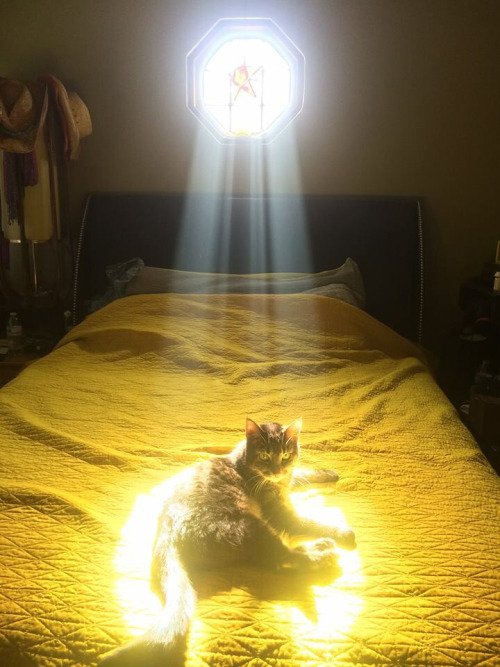SCIENCE IS COMING.

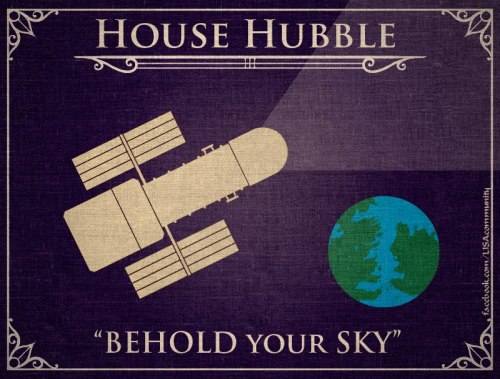
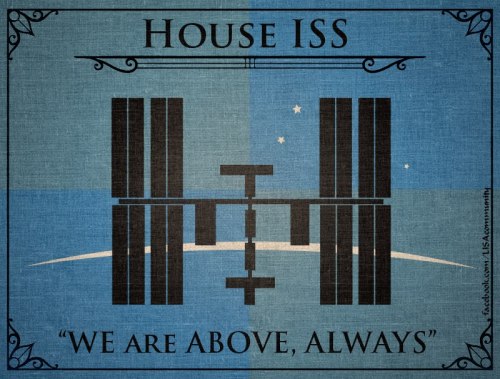






SCIENCE IS COMING.
In honor of the release of Game of Thrones Season 6 today, check out these amazing House designs made by students from the Albert Einstein Institute. Each Game of Thrones inspired sigil celebrates a different changing project in physics and space exploration.
House Hubble - Hubble Space Telescope
House ISS - International Space Station
House ITER - Nuclear Fusion Project
House LHC - Large Hadron Collider
House Curiosity - Mars Science Laboratory
House LISA - Laser Interferometer Space Antenna
House JWST - James Webb Space Telescope
House VLA - Very Large Array
I’m super torn because while I’m #teamradioforever, I’m also a lifelong #hubblehugger. I guess if I’m forced to chose, it might have to be House VLA.
- Summer
[HT Charee Peters]
More Posts from Secretagentpeptidebond and Others

A Living Cage
The typical eukaryotic, which basically covers every cell found in animals, plants, fungi, slime molds, protozoa and algae, is a packed place, crammed with a nucleus (itself containing six feet of tightly wound DNA), mitochondria, centrosomes, peroxisomes, lysosomes, ribosomes, endoplasmic reticula (both smooth and rough), actin filaments, Golgi vesicles and more.
All of these cellular elements are in constant action, buzzing with communication and the movement of molecules. The image above, produced by Maria Voigt at the RCSB Protein Data Bank, depicts a clathrin cage, which is essentially a little basket for carrying and moving things around inside cells. Clathrin derives from the Latin clatratus, which means lattice.
Cells have a lot of them. They’re used to transfer nutrients, import signaling receptors, mediate an immune response after sampling the world outside the cell and the clean-up of cellular debris. When not in use, the cages are broken up, to be reassembled when next needed.
The cage above is roughly 50 nanometers wide, a size almost too small to imagine. By comparison, there are 25.4 million nanometers in an inch. A sheet of paper is roughly 100,000 nanometers thick. A single strand of human DNA is 2.5 nanometers in diameter.
The image is one of this year’s winners of the Wellcome Image Awards.





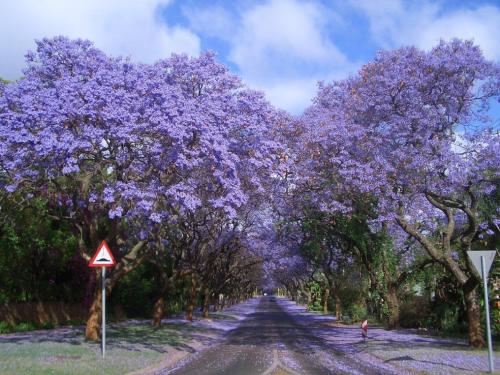



Moving Through Color
These breathtaking tree tunnels are famous in their perspective countries, standing as a testament to time and beauty:
Wisteria Tunnel, Tochigi, Japan - Ashikaga Flower Park in Tochigi is one of the best places to admire different varieties of wisteria.
Dark Hedges, County Antrim, Northern Ireland - This beautiful avenue of beech trees was planted by the Stuart family in the 18th century, and is one of the most photographed natural phenomena in the country.
Tunnel of Love, Kleven, Ukraine - This luscious green tunnel provides passage for a private train that provides wood to a local factory. The tunnel is also used by lovers to make a wish – it is said that if they are sincere in their love, their wishes will come true.
Ginkgo Tree Tunnel, Tokyo, Japan - Around 65,000 ginkgo trees line the streets of Tokyo; they are known as “the bearer of hope”, since some of them survived the bombing of Hiroshima. This tree tunnel is located in the outer garden of Meiji Shrine.
Jacarandas Walk, Johannesburg, South Africa - The Jacaranda trees explode into full blossom every October, turning the walk into a purple paradise.
Point Reyes, California, United States - Bishop pine, douglas fir and coast redwood are all to be found in this atmospheric part of the Pacific Coast.
Ashdown Forest, West Sussex, England - Much of the tree cover in the South Downs area was razed thousands of years ago, but some thickly-wooded areas remain.
Sena De Luna, Spain - A small Spanish village in the province of Castile and León, Sena De Luna is home to around 450 people.
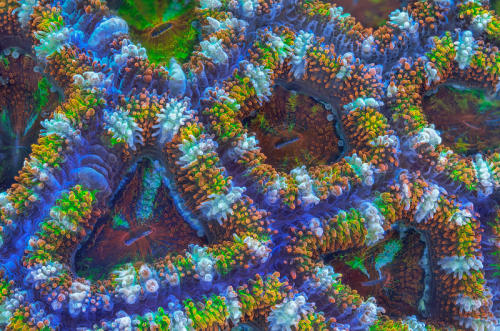


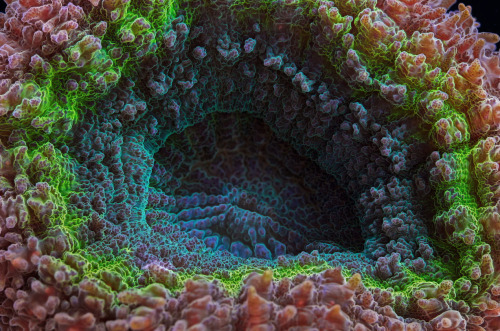

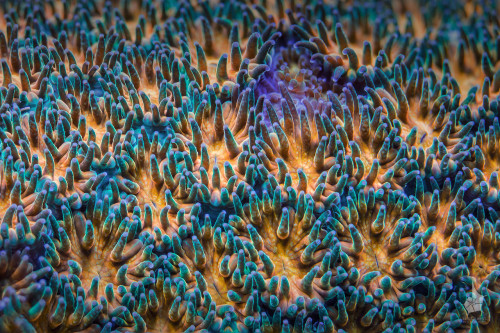
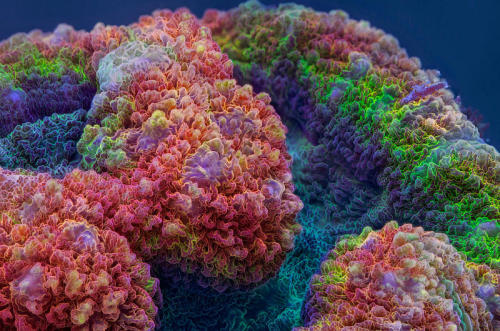
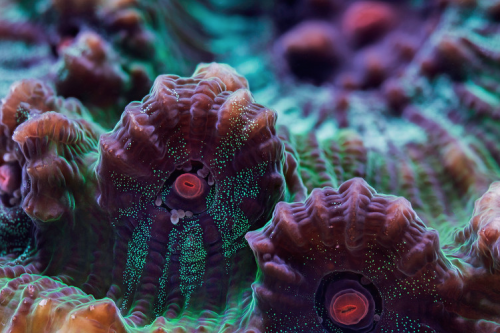
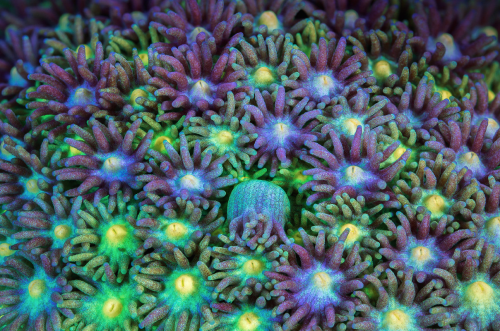

daniel stoupin, a doctoral candidate in marine biology at the university of queensland, has photographed a variety of coral species from the great barrier reef using full spectrum light to reveal fluorescent pigments that would otherwise be invisible to the naked eye. (see more at bioquest studios)
coral growth rates in the great barrier reef have plummeted 40 percent in the last 40 years, a result, according to a recent study, of increased ocean acidification. since the beginning of the industrial revolution, about one third of the carbon dioxide that has been released into the atmosphere as a result of fossil fuels has been absorbed by the oceans, where it in turn prevents coral from using a mineral called aragonite to make their calcified skeletons.
new modelling has also shown that if ocean waters continue to warm by even one degree, which most now see as unstoppable, the coverage of corals on the great barrier reef could decline to less than 10 percent, which is a level too low for the reef to mount a recovery.
further complicating matters for the coral is the plastic detritus left by humans which now litter the oceans and which the coral now consume. unable to expel the plastic bits and thus take in nutrients, the coral slowly starve. a recent study found that each square kilometre of australia’s sea surface water is contaminated with approximately 4,000 pieces of tiny plastic.
Since October, northeastern Brazil has been devastated by a wave of microcephaly, a condition where babies are born with abnormally small heads and damaged brains. At this moment, all signs point to the mosquito-borne Zika, a little-studied virus normally associated only with rashes, fever, and other mild symptoms. In the months since Brazil sounded the alarm, Zika cases have been popped up in a dozen other countries, and health authorities predict the virus will spread across the Americas. Infectious disease specialist Michael Osterolm explains what’s known about Zika, and what we can expect as this outbreak unfolds.

Earthset from the Lunar Reconnaissance Orbiter : On the Moon, the Earth never rises or sets. If you were to sit on the surface of the Moon, you would see the Earth just hang in the sky. This is because the Moon always keeps the same side toward the Earth. Curiously, the featured image does picture the Earth setting over a lunar edge. This was possible because the image was taken from a spacecraft orbiting the Moon - specifically the Lunar Reconnaissance Orbiter . In fact, LRO orbits the Moon so fast that, from the spacecraft, the Earth appears to set anew about every two hours. The featured image captured one such Earthset about three months ago. By contrast, from the surface of the Earth, the Moon sets about once a day with the primary cause being the rotation of the Earth. LRO was launched in 2009 and, while creating a detailed three dimensional map of the Moons surface, is also surveying the Moon for water and possible good landing spots for future astronauts. via NASA
js
That one time my roommate couldn't watch Shane's Asagao Academy stream so I live-texted it to her instead (part 2).










@didyouknowshaning‘s asagao stream part 2/part 1
Thanks to @secretagentpeptidebond for the documentation!
-
 at-least-ill-die-a-lionturtle liked this · 9 months ago
at-least-ill-die-a-lionturtle liked this · 9 months ago -
 aerposts liked this · 1 year ago
aerposts liked this · 1 year ago -
 benadrylcustardbath reblogged this · 1 year ago
benadrylcustardbath reblogged this · 1 year ago -
 tinkerterror reblogged this · 1 year ago
tinkerterror reblogged this · 1 year ago -
 charleytakeabow liked this · 2 years ago
charleytakeabow liked this · 2 years ago -
 thomasbrisenio liked this · 3 years ago
thomasbrisenio liked this · 3 years ago -
 musee-du-laurel liked this · 4 years ago
musee-du-laurel liked this · 4 years ago -
 nlockett reblogged this · 4 years ago
nlockett reblogged this · 4 years ago -
 nlockett liked this · 4 years ago
nlockett liked this · 4 years ago -
 jackal-202 liked this · 5 years ago
jackal-202 liked this · 5 years ago -
 kleray1 liked this · 5 years ago
kleray1 liked this · 5 years ago -
 septimore liked this · 5 years ago
septimore liked this · 5 years ago -
 fraktally reblogged this · 5 years ago
fraktally reblogged this · 5 years ago -
 lord-ofthe-marvel liked this · 5 years ago
lord-ofthe-marvel liked this · 5 years ago -
 w121249-blog liked this · 5 years ago
w121249-blog liked this · 5 years ago -
 yakutyanochka liked this · 5 years ago
yakutyanochka liked this · 5 years ago -
 whichway7 liked this · 5 years ago
whichway7 liked this · 5 years ago -
 runawaaaychild liked this · 5 years ago
runawaaaychild liked this · 5 years ago -
 novasmusiccorner reblogged this · 5 years ago
novasmusiccorner reblogged this · 5 years ago -
 quirkyscientificpoet liked this · 5 years ago
quirkyscientificpoet liked this · 5 years ago -
 king-brisingr reblogged this · 5 years ago
king-brisingr reblogged this · 5 years ago -
 i-love-shinobu liked this · 5 years ago
i-love-shinobu liked this · 5 years ago -
 zathrasan reblogged this · 5 years ago
zathrasan reblogged this · 5 years ago -
 zathrasan liked this · 5 years ago
zathrasan liked this · 5 years ago -
 shambolicshadows liked this · 5 years ago
shambolicshadows liked this · 5 years ago -
 astromana reblogged this · 5 years ago
astromana reblogged this · 5 years ago -
 eccentricverbicide liked this · 5 years ago
eccentricverbicide liked this · 5 years ago -
 thecarboardknight liked this · 5 years ago
thecarboardknight liked this · 5 years ago -
 lou-the-naga-queen reblogged this · 5 years ago
lou-the-naga-queen reblogged this · 5 years ago -
 lou-the-naga-queen liked this · 5 years ago
lou-the-naga-queen liked this · 5 years ago -
 boomages liked this · 5 years ago
boomages liked this · 5 years ago -
 wannabakewithsomebody liked this · 5 years ago
wannabakewithsomebody liked this · 5 years ago -
 thanks----take-a-look liked this · 5 years ago
thanks----take-a-look liked this · 5 years ago -
 ransezu liked this · 5 years ago
ransezu liked this · 5 years ago -
 str8aped reblogged this · 6 years ago
str8aped reblogged this · 6 years ago -
 badcaptaingames liked this · 6 years ago
badcaptaingames liked this · 6 years ago -
 bradburymeinfire reblogged this · 6 years ago
bradburymeinfire reblogged this · 6 years ago -
 raccooninacoat liked this · 6 years ago
raccooninacoat liked this · 6 years ago -
 sykorky reblogged this · 6 years ago
sykorky reblogged this · 6 years ago -
 nerdytrashmilkshake-blog-blog liked this · 6 years ago
nerdytrashmilkshake-blog-blog liked this · 6 years ago -
 clarkewithane reblogged this · 6 years ago
clarkewithane reblogged this · 6 years ago -
 dubiousspectrum reblogged this · 6 years ago
dubiousspectrum reblogged this · 6 years ago -
 mygenderischeese reblogged this · 6 years ago
mygenderischeese reblogged this · 6 years ago -
 mygenderischeese liked this · 6 years ago
mygenderischeese liked this · 6 years ago -
 snogbox-out reblogged this · 6 years ago
snogbox-out reblogged this · 6 years ago

